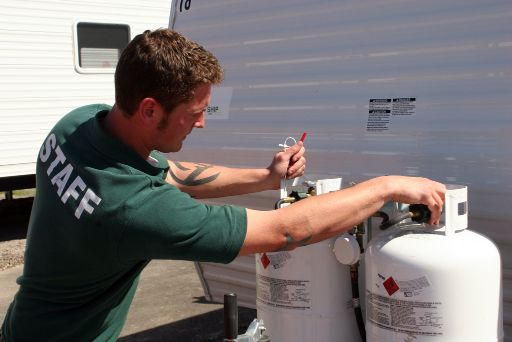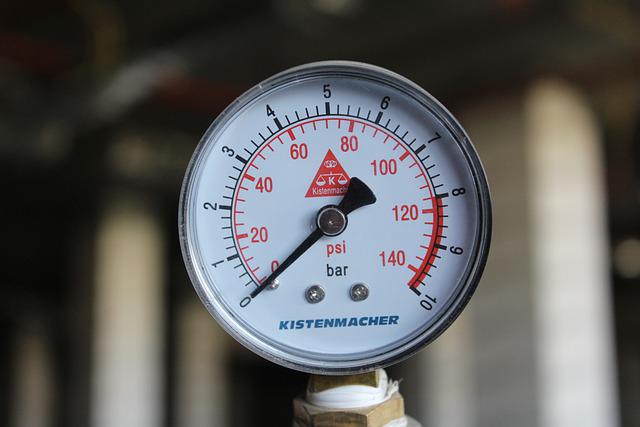
Underground propane tanks serve as invisible workhorses, quietly fueling everything from cozy home fireplaces to large-scale industrial operations. Tucked out of sight, they store a powerful source of energy just beneath our feet.
But with great power comes great responsibility, and that’s where regulations come into play. In this article, we’ll delve into the world of underground propane tank regulations—a rulebook written with precision to ensure safety, environmental integrity, and peace of mind.
Whether you’re a homeowner, a business operator, or simply curious, understanding these regulations is key to a safe and sustainable relationship with one of the most common, yet overlooked, aspects of modern energy systems.
Join us as we uncover the layers of legislation that govern the guardians of propane lying below ground.
Regulations for Underground Propane Tanks
When you’re considering the installation of an underground propane tank, it’s essential for you to understand the regulatory framework that governs their usage. These regulations are in place to ensure your safety, as well as to protect the environment.
Federal Regulations
1. Department of Transportation (DOT) Regulations If you’re involved in the transportation or installation of underground propane tanks, you’ll need to adhere to DOT regulations. These rules govern:
- The design, construction, and maintenance of propane tanks, ensuring they are safe for transport and storage.
- The handling procedures you must follow while tanks are in transit.
- The training your personnel must receive if they handle hazardous materials.
2. Environmental Protection Agency (EPA) Guidelines You should also be aware of the EPA’s guidelines, which address the potential environmental impacts of underground propane tanks. Key EPA considerations include:
- The requirement for Spill Prevention, Control, and Countermeasure (SPCC) plans to mitigate the possibility of leaks.
- The enforcement of Underground Storage Tank (UST) regulations on certain larger tanks to prevent and address leaks.
State and Local Regulations
1. Permitting Processes Your state and local governments will likely have additional requirements for permitting. This can involve:
- Securing zoning approval for the location of your tank.
- Obtaining necessary permits that confirm your compliance with local codes and standards.
- Possibly having your installation plans reviewed and approved by a professional engineer.
2. Safety Inspections and Certifications Post-installation, it’s vital for you to engage with local authorities to schedule regular safety inspections, which might include:
- Confirming that your tank installation complies with all safety and zoning requirements.
- Check for corrosion protection and the integrity of your tank.
- Receiving a certification from a qualified inspector that your tank meets all local laws.
Industry Standards
1. National Fire Protection Association (NFPA) Standards To ensure you are meeting safety benchmarks, you’ll want to align with NFPA standards, particularly:
- NFPA 58, the “Liquefied Petroleum Gas Code,” which dictates how your propane system, including any underground tanks, should be installed and operated.
- NFPA 54, the “National Fuel Gas Code,” which offers guidelines for gas installations within your buildings and property.
2. American Society of Mechanical Engineers (ASME) Codes Additionally, it’s important for you to comply with ASME codes, which cover the engineering and integrity of your tank’s construction:
- The ASME Boiler and Pressure Vessel Code, Section VIII, outlines how your propane tank should be built to withstand various pressures.
As a prospective or current owner of an underground propane tank, staying compliant with these regulations is crucial. It not only ensures your own safety and that of those around you but also helps safeguard the environment from potential hazards associated with propane storage.
What are the Requirements for an Underground Propane Tank?
There are a few requirements for an underground propane tank that are regulated. The tank must be at least 10 feet away from any building, 10 feet away from any property line, and 50 feet from any source of ignition. The tank must also be buried at least 5 feet below the ground.
A state might have its own requirements with regard to the installation. Again, those numbers mentioned above may differ and depend on your state’s local requirements.
The American Petroleum Institute (API) Standard 650, covers the design and construction of tanks for storing petroleum products. Finally, the Underground Storage Tank (UST) regulations promulgated by the Environmental Protection Agency (EPA) cover the installation and operation of underground storage tanks for a variety of petroleum products, including propane.
Tanks must be constructed of steel or other approved materials and have a minimum wall thickness of 5/16 inch. The tank must be buried a minimum of 5 feet below the ground surface and have a minimum of 18 inches of soil cover over the top of the tank. A corrosion-resistant coating must be applied to the exterior of the tank. The tank must be equipped with a pressure relief valve and a vapor return valve.
Additional info you might need:
Pre-installation Considerations
1. Site Assessment and Selection Before you start digging, you must conduct a thorough site assessment. This involves:
- Evaluating the soil conditions to ensure they’re suitable for underground tank installation.
- Checking for any environmental restrictions or potential hazards in the area.
2. Distance Requirements from Buildings and Property Lines You’ll need to familiarize yourself with the local codes that determine how far your tank should be from buildings and property lines. This typically involves:
- Adhering to minimum distance requirements to reduce the risk of fire, explosion, or other hazards.
- Ensuring the tank location allows for easy access for filling and maintenance.
Installation Procedures and Best Practices
1. Tank Specifications and Material Standards When selecting your tank, make sure it complies with:
- Industry specifications for materials and construction to withstand underground conditions.
- The appropriate standards for capacity and pressure requirements are based on your usage needs.
2. Safety Features and Protective Measures During installation, incorporate safety features that include:
- Overfill prevention devices to avert potential leaks or spills.
- Adequate ventilation to prevent the accumulation of propane gas.
Post-installation Inspections and Approvals
After installation, it’s not just about being up and running; you need to ensure everything is up to code through:
- Scheduling an inspection with local authorities to verify the installation meets all safety regulations.
- Obtaining necessary approvals or certifications that may be required in your jurisdiction.
Remember, installing an underground propane tank is a significant undertaking that comes with a responsibility to prioritize safety and compliance. By meticulously following these installation and safety requirements, you not only ensure your personal safety but also contribute to the well-being of your community and the protection of the environment.
What are the Maintenance Requirements?
Ensuring the long-term safety and functionality of your underground propane tank requires a steadfast commitment to regular maintenance, diligent inspections, and stringent compliance with regulatory standards. Here’s what you need to know to keep your tank in top condition and within the law.
A. Regular Maintenance Requirements
1. Leak Checks and Pressure Testing To prevent potential hazards, you should:
- Conduct regular leak checks to detect any signs of propane escape, which can pose serious safety risks.
- Perform pressure testing at intervals recommended by the manufacturer or regulatory bodies to ensure the integrity of the tank.
2. Corrosion Protection and Anode Maintenance Given that your tank is underground, it’s susceptible to corrosion, so you must:
- Apply corrosion protection systems and perform regular checks to ensure they are functioning properly.
- Maintain and replace sacrificial anodes, which protect the tank from corrosion, as necessary.
B. Inspection Schedules and Record-Keeping
1. Professional Inspections vs. Owner Checks Understanding the distinction between professional and owner responsibilities is key:
- Schedule professional inspections as required by law to ensure your tank meets all safety standards.
- Perform your own regular checks for visible signs of wear, corrosion, or damage, keeping an eye on the tank’s surroundings as well.
2. Documentation for Compliance Keeping thorough records is not just good practice—it’s often a legal requirement:
- Maintain logs of all inspections, maintenance, repairs, and any incidents that occur.
- Keep these documents readily available for review by inspectors or in case of an audit.
C. Handling Non-Compliance and Violations
1. Potential Penalties and Fines Should you fall out of compliance, be aware that:
- You may face penalties, fines, or other sanctions from regulatory agencies, which can be substantial.
- Ongoing non-compliance can lead to increased scrutiny from regulators or even legal action.
2. Remediation and Corrective Actions If a compliance issue arises, it’s essential to:
- Address and rectify the violation promptly to prevent further penalties or damage.
- Implement corrective actions as required by regulators, which may include repairs, upgrades to systems, or even additional training for personnel.
By adhering to these guidelines, you not only ensure the extended lifespan of your underground propane tank but also uphold the safety standards that protect you and your community. Always stay informed of the latest regulations and best practices to avoid any legal or safety pitfalls.
Environmental Considerations and Regulations
A. Protecting the Soil and Groundwater If you’re thinking about an underground propane tank, you should know how it could affect the soil and groundwater around it. Leaks from tanks can contaminate these natural resources, causing harm to ecosystems and possibly affecting drinking water. That’s why it’s crucial for you to ensure that your tank is correctly installed and maintained to prevent any harmful leaks.
B. Leak Detection and Your Responsibilities You have to be on the lookout for leaks. Regulations usually require that you have leak detection systems in place and that you report any leaks as soon as you discover them. It’s not just about fixing the problem—it’s about being transparent and letting the right authorities know so that safety isn’t compromised.
C. What to Do If There’s a Leak or Spill In case you face a leak or spill from your propane tank, you need to act fast. There are specific actions and remediation efforts that regulations will require you to follow. This might include cleaning up the contaminated area, repairing any damage to the tank, and making sure it’s safe again for use. Following these steps helps to minimize environmental damage and gets your tank back in good working order.
Conclusion
Strict rules for underground propane tanks are there for a very good reason: your safety and the well-being of the environment. Propane is a flammable material, and without these important guidelines, the risks can be significant. Following the rules isn’t just for formality’s sake; it’s about making sure that you handle propane tanks properly and responsibly.
These regulations are your playbook for safety and keeping nature unharmed. They guide you on how to build, install, and look after your propane tanks the right way. This means fewer chances for leaks, spills, or accidents that could hurt people or damage property and the environment.
Remember, the rules aren’t set in stone. They change and get better over time, often because there are new discoveries and technologies that make propane storage safer and more eco-friendly. Keeping up-to-date with these changes is part of your job. By staying informed and compliant, you’re not just following the law—you’re helping to ensure a safer future for everyone.

Mike is an experienced propane technician with over 15 years of professional experience in the field. He has dedicated his career to helping customers with their propane needs, from installation to maintenance and repair. Together with Jeremy, he co-founded this website to provide useful information and guidance to customers seeking reliable propane services.



